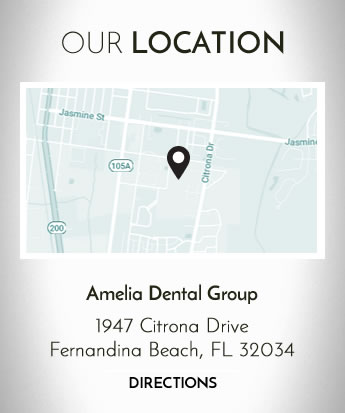
While minor gum recession can be treated by your dentist with deep cleaning and antibiotics, serious gum recession can only be treated with oral surgery. A loss of bone and gum pockets that are very deep require gum surgery to address the pain and damage left by acute gum recession.
Three treatments are used primarily in the treatment of serious gum recession, in order of invasiveness: pocket depth reduction, regeneration, and soft tissue graft. Pocket depth reduction involves a deep cleaning of the affected area. The periodontist folds the gum tissue back and utilizes tooth scaling and root planing to remove any tartar and plaque built up around the tooth. Once the gum pockets are clean, the surgeon pulls the gum tissue gently around the tooth, eliminating the deep pockets altogether or significantly reducing their depth.
Regeneration utilizes a similar treatment to pocket depth reduction, but it also addresses any bone loss that occurred due to acute gum recession. In this process, a regenerative agent such as graft tissue, membranes or tissue stimulating proteins is added to the affected area. The gum tissue is then tucked into place and stitched down. Over time, the regenerative agent will work to rebuild lost bone and tissue, leaving healthy and thriving tissue behind.
The most common soft tissue graft is taken from the patient’s own mouth, either by removing tissue from the roof of the mouth or from the gum tissue near the affected tooth. The healthy gum tissue is placed in the affected area, over the exposed tooth root, protecting it from infection and damage.
To prevent the need for oral surgery to address your receding gums, have good oral hygiene habits. Brush, floss and see your dentist twice a year for checkups and professional cleanings. Talk to your dentist if you have any other questions about how to reverse or prevent gum recession.
If you live in the Fernandina Beach area contact us today

There is no quicker or easier way to dramatically improve the look of your smile than professional teeth whitening. Your dentist probably offers several whitening options and can advise you about the most appropriate type of whitening treatment to ensure your brightest, whitest smile. No matter which whitening treatment you and your dentist decide will be best, there are several tips you can follow to help you achieve the ideal result:
- Have any existing dental problems treated prior to whitening to avoid side effects or complications.
- Schedule a professional teeth cleaning prior to your whitening appointment to remove buildup of plaque or tartar you cannot remove with home cleaning, and provide the best surface for the whitening treatment.
- Begin brushing with a desensitizing toothpaste several weeks before whitening to limit the sensitivity that can sometimes result from whitening agents.
- If you are extremely prone to dental sensitivity, check with your dentist about taking a painkilling medication before your whitening appointment.
- Consult with your dental office to determine how much time you should allow for your whitening appointment.
- Refrain from eating or drinking anything except water for at least one hour after the completion of your whitening treatment, and avoid ingesting foods and beverages that contain stain-causing agents for no less than 24 hours.
- Make sure to attend any follow-up appointments with your dentist.
- Maintain excellent home oral care habits to extend the life of your whitening procedure.
By following these tips, you can boost the results of your professional teeth whitening treatment and face the world with beautiful, bright smile!
We treat patients from Fernandina Beach and the surrounding area

Everyone hopes to look younger and more attractive, and one way to achieve that youthful glow is to have a beautiful smile. Teeth free of stains, chips, misalignment, cracks and other problems are more likely to help you feel good about yourself and make a better impression on others. One way to achieve this goal is to see a cosmetic dentist for a smile makeover.
Dentists have been helping patients improve the appearance of their smiles for many years, but advances in techniques and materials allow smile makeovers to be much more advantageous today. Silver fillings have been replaced with tooth-colored composite resin, dental implants securely replace missing teeth, teeth whitening methods produce dramatic results, and computer imaging can provide great predictions for the outcomes of various cosmetic dental procedures.
There are many options for a smile makeover depending on what you need:
- Discolored or stained teeth benefit from professional whitening treatment. Yellowed teeth can improve numerous shades of white to give you a whole new look.
- Chips in your teeth can be filled with tooth-colored composite resin in a procedure called bonding. You can choose a shade closely matching your tooth, so that once it is smoothed and polished you can’t even tell it was done.
- Uneven teeth that are slightly longer or shorter than their neighbors can be shaped in a more appealing way using recontouring techniques.
- Gaps between teeth can be closed using composite material, or large spaces can be hidden with dental veneers. In fact, porcelain veneers can cover all sorts of flaws that you don’t want others to see in your smile.
- Cavities or cracked teeth can be filled with tooth-colored material instead of traditional amalgam, making them invisible in the mouth.
- Broken teeth that are unsightly or weak can be covered with a durable and attractive crown.
Crooked teeth can be moved with orthodontic treatment, employing the latest method of Invisalign. These clear plastic aligners transform your smile without the noticeable metal braces that impact your diet and dental hygiene.
We look forward to seeing you in our Fernandina Beach dental office

After suffering tooth loss for any reason, it’s important to restore your mouth’s function and appearance with restoration options through your dentist. In the past, many patients have gotten dentures for this purpose. Dental implants provide a newer and very popular option. If you already have dentures but aren’t completely satisfied with them, is it possible to change to dental implants instead?
The answer is yes! Of course, you need to consult your dentist to make sure that you are a good candidate for implants. There are a number of reasons that denture wearers might decide that implants are a better solution to their tooth replacement needs. Some patients find dentures to be uncomfortable because they don’t stay in place securely or they irritate the gums. Some find a more permanent remedy to be more appealing than dentures, and implants do provide a long-lasting solution to tooth loss. If patients with dentures don’t like them and aren’t wearing them consistently, they aren’t achieving the goal of restoration.
There are some additional complications that can occur with dentures, making implants more appealing. Trouble speaking and eating is a hazard if the dentures slip, as well as jawbone loss and increased wrinkles. Some patients even alter their diets due to problems eating certain foods. The increased dental hygiene regimen also bothers some patients who are unwilling to do the extra tasks required.
If you dislike your dentures, consider making the switch to dental implants. It might restore your self-confidence as well as your mouth’s function and appearance.
Our dental office is located in Fernandina Beach

General dentistry offers exactly what the name implies: dental care related to the general maintenance of good oral health. The ideal way to look at dentistry is preventative, which means focusing on good oral hygiene and functionality before problems can take hold. Finding a qualified and skilled general dentist who you visit every six months for checkups is the best way to prevent serious dental issues and help you maintain excellent oral health.
A trip to the general dentist for you or any of your family members, no matter their age, is a smart way to keep your smile looking and feeling great. Your general dentist will help create the perfect dental plan that depends on your personal oral health and needs. A typical dental visit includes thorough examination, X-rays or other diagnostic tests, professional teeth cleaning, and any treatments that might be needed for your condition. If a certain treatment isn’t available through your general dentist, it’s likely that you’ll receive a referral to a reputable specialist to complete the work.
Every dentist is unique, so you’ll need to inquire about the specific treatments available at your dentist’s practice. Some common services that many general dentists provide include:
- Dental sealants
- Fluoride treatments
- Professional cleanings
- Gum scaling or recontouring
- Fillings
- Bonding
- Root canal therapy
- Crowns and bridges
- Dental implants
- Dentures
- Veneers
- Orthodontics
In addition to dental treatments, your general dentist will evaluate your at-home hygiene routine and make suggestions for improvement. You will learn proper brushing and flossing techniques, as well as learn about any additional products or practices that might improve your oral health. Your general dentist wants you and your family to have the best smiles and oral health possible, and will help you achieve that goal.
We treat patients from Fernandina Beach and the surrounding area

Thanks to advanced techniques and technology, your family dentist can now offer you and your family a wide variety of cosmetic dentistry treatments to help you achieve the smiles you desire. There is often no need to search for a specialized cosmetic dentist, as your family dentist can provide many of the cosmetic dental procedures right in their office. Some of the cosmetic treatments you can expect to find at many family dentists include:
- Professional teeth whitening is used to improve the appearance of stained or discolored teeth, can be completed in as little as one visit, and can lighten teeth up to ten shades.
- Dental bonding with tooth-colored resin can be applied to repair discolored or chipped teeth.
- Crowns and bridges can be placed to fix damaged or missing teeth and can be matched to the color, height, texture and overall appearance of your natural teeth.
- Tooth-colored composite fillings come in multiple shades to match your natural tooth and are used as an attractive alternative to traditional silver or gold fillings.
- Porcelain veneers are placed to conceal cracks, chips, and gaps and create a whiter, more perfect smile.
- Inlays or onlays, also called indirect fillings, can be made of composite, tooth-colored material, are long-term, and are used on teeth with tooth decay or other damage needing larger coverage than a traditional filling.
- Complete and partial dentures are used to replace missing teeth and create a more natural-looking smile.
- Invisalign is an orthodontic solution used to straighten misaligned or crooked teeth.
Many of these procedures can be combined to create the beautiful and healthy smile you desire. Schedule a consultation with your family dentist to find out more about the cosmetic procedures they offer to help you achieve a winning smile.
We treat patients from Fernandina Beach and the surrounding area







